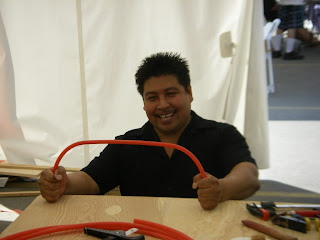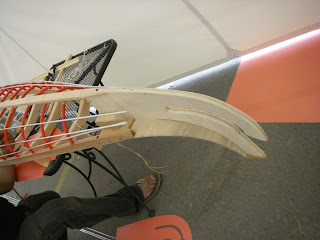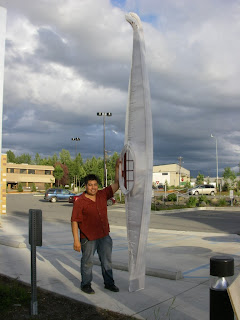Lately, I have been building wider kayaks, both for reasons of comfort and for potential use in sailing. If you want to hang a sail off a boat, you want some stability and stability is achieved by making the boat wider. A wider boat is unfortunately a slower boat to paddle.
So the question is, where is the point of compromise?
Just how much speed do I want to trade off for stability. I ponder this question each time I haul a kayak down to the water.
Last night I paddled one of my skinny baidarkas. I was of course pleased by its speed but also considered that it was not a good beer drinking platform. But when I paddle one of my wide boats, I am pleased by the fact that I can lay back in it and if I wanted to, drink a beer. But then, running my usual circuit once around Alameda's Coast Guard Island, I find that I don't like the drop in speed.
Of course, speed is relative and perceptions can quickly change. If my speed drops from 4 mph to 3 mph, how big a deal is that? What if I just relax, paddle no harder than usual and just take a little extra time to run my circuit?
And here's another revelation. I like how my body feels after I paddle. I always knew that I felt better after I went out in my kayak, but I assumed that that was just something that came from being in a kayak. It is in part, but the largest part of the feelgood response is caused by the effort of paddling.
On summer afternoons, the wind blows from the west on SF bay, and the estuary where I paddle runs east-west and the wind blows straight down it. I have found that with a sail on my wide kayak, I can sail two miles up the estuary, even with the tide going out and then paddle back home. Great stuff for relaxing, but I have found that I miss the feelgood response that paddling produces.
Oh well. The search for the perfect compromise goes on: a kayak that is fast enough for paddling but doesn't have to be wide enough for sailing.
Stay tuned.
 That's Wayne's hand in the picture. Wayne was helping out with both kayaks, the urban Aleut and the urban Alutiiq.
That's Wayne's hand in the picture. Wayne was helping out with both kayaks, the urban Aleut and the urban Alutiiq.












